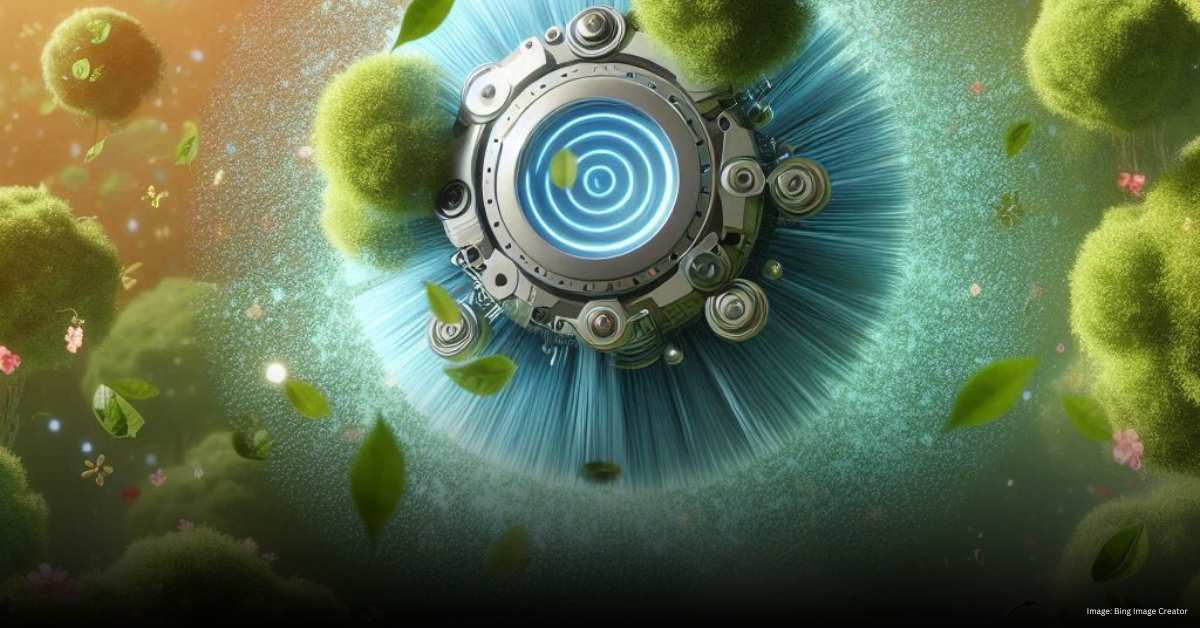Nanotechnology is revolutionizing many industries, from medicine to electronics. But what about its effects on the environment? While nanotechnology offers numerous benefits, including pollution control and cleaner energy, it also raises concerns about its potential environmental impact. In this article, we’ll explore both the positive and negative impacts of nanotechnology on the environment and discuss solutions to address potential problems.
The Positive Impacts of Nanotechnology on the Environment
Nanotechnology has the potential to address some of the biggest environmental challenges we face today. Here are some of the key positive impacts:
1. Pollution Control and Cleanup
Nanotechnology can help reduce pollution by breaking down harmful substances in the air, water, and soil. For example, nanoparticles are used in water filters to remove heavy metals and other pollutants, making water safer to drink. They can also break down oil spills and other toxic chemicals, helping clean up contaminated environments faster and more effectively.
2. Cleaner Energy Production
Nanotechnology plays a vital role in producing cleaner energy. Nanomaterials are used to improve the efficiency of solar panels, making them more effective at converting sunlight into electricity. They also help in developing better batteries and energy storage systems, reducing our reliance on fossil fuels and lowering greenhouse gas emissions.
3. Reducing Waste Through Better Manufacturing
Nanotechnology can make manufacturing processes more efficient, reducing waste and saving energy. For instance, using nanomaterials in production can minimize the amount of raw material needed, lowering the overall environmental footprint of manufacturing. This helps companies produce goods more sustainably.
The Negative Impacts of Nanotechnology on the Environment
Despite its many benefits, nanotechnology also poses potential risks to the environment. Understanding these issues is crucial to finding ways to minimize harm.
1. Release of Nanoparticles into the Environment
One of the biggest concerns with nanotechnology is the unintentional release of nanoparticles into the environment. These tiny particles can enter water systems, soil, and air, potentially harming plants, animals, and even humans. Because they are so small, they can easily bypass traditional filters and accumulate in the environment, leading to unknown long-term effects.
2. Toxicity of Nanomaterials
Some nanomaterials are toxic to living organisms. For instance, certain nanoparticles can damage aquatic life when released into water bodies, disrupting ecosystems. There are also concerns about how nanoparticles may affect human health, as they can be absorbed through the skin or inhaled, potentially leading to respiratory or other health issues.
3. Lack of Regulation and Monitoring
The rapid growth of nanotechnology has outpaced the development of regulations to ensure environmental safety. There is currently a lack of standardized testing and monitoring of nanomaterials, making it difficult to assess their environmental impact fully. Without proper regulation, harmful nanoparticles could be released into the environment unchecked.
Solutions to Minimize the Environmental Impact of Nanotechnology
To harness the benefits of nanotechnology while minimizing its risks, several solutions can be implemented:
1. Developing Safe-by-Design Nanomaterials
Scientists are working on creating “safe-by-design” nanomaterials that are less toxic and more environmentally friendly. By designing nanomaterials that break down easily or do not accumulate in the environment, we can reduce the negative impacts on ecosystems and human health.
2. Improved Regulations and Standards
Governments and regulatory bodies need to establish clear guidelines for the production, use, and disposal of nanomaterials. This includes rigorous testing for environmental and health impacts before nanomaterials are released into the market. Better regulations will help control the release of potentially harmful nanoparticles.
3. Advanced Monitoring and Cleanup Technologies
Investing in advanced monitoring technologies can help track the presence of nanoparticles in the environment. Additionally, developing new cleanup methods can help remove harmful nanomaterials from water, air, and soil, ensuring that they do not pose long-term risks.
Conclusion
Nanotechnology holds great promise for improving our lives and solving environmental challenges, but it also comes with potential risks. By developing safer nanomaterials, implementing better regulations, and investing in advanced monitoring and cleanup technologies, we can enjoy the benefits of nanotechnology while protecting the environment. It’s crucial to balance innovation with caution to ensure a sustainable future.
Frequently Asked Questions (FAQs)
Q1: What is nanotechnology?
A: Nanotechnology involves manipulating materials on an atomic or molecular scale, often smaller than 100 nanometers, to create new materials and devices with unique properties.
Q2: How does nanotechnology help the environment?
A: Nanotechnology helps the environment by improving pollution control, making energy production cleaner, and reducing waste in manufacturing processes.
Q3: What are the potential risks of nanotechnology to the environment?
A: Potential risks include the unintentional release of nanoparticles, toxicity to aquatic and human life, and a lack of proper regulations and monitoring systems.
Q4: How can we minimize the environmental risks of nanotechnology?
A: We can minimize risks by developing safer nanomaterials, improving regulations, and using advanced monitoring and cleanup technologies.
Q5: Are all nanoparticles harmful to the environment?
A: Not all nanoparticles are harmful, but their impact largely depends on their type, size, and concentration in the environment. Proper testing and regulation are necessary to ensure safety.
Nanotechnology offers both opportunities and challenges for environmental protection. By staying informed and proactive, we can leverage its benefits while safeguarding our planet.


